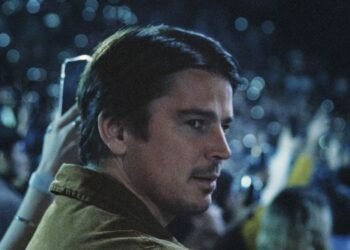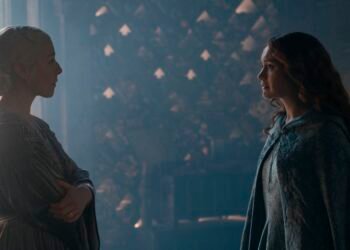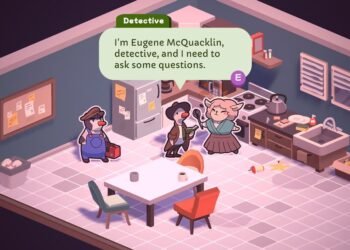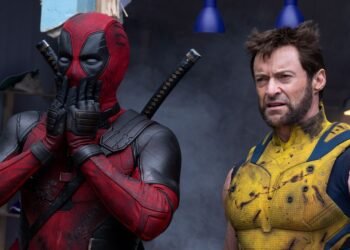A Quiet Place Part II is kind of like what you’d get if the alien hunter from the Predator franchise stopped by This Is Us for a few episodes. The film is a horror story with the heart of a family drama, and for the most part, it works very well. But just like real families, it’s pretty consistent in both its strengths and its flaws — in other words, it’s the perfect sequel for fans of the original movie, while also being not that bad at welcoming viewers who might have missed the first go-round.
Part II begins with an extended prequel set before the first film, depicting the arrival of the deadly, nigh-indestructible aliens that have wiped out much of the population by the time A Quiet Place begins. Writer-director John Krasinski reintroduces the Abbott family: parents Lee (Krasinski) and Evelyn (Emily Blunt), along with children Marcus (Noah Jupe) and Regan (Millicent Simmonds). As the family gathers to watch a Little League game, we’re also reminded that the Abbotts are unusually well-equipped to handle what’s coming: Lee is a survivalist type (as noted by the large hunting knife he uses to slice an orange), and the family all speaks ASL to communicate with Regan, who is deaf.
In addition to giving Part II the opportunity to bring back Lee, who died in A Quiet Place, the prologue also helps introduce viewers who haven’t seen the first movie to the rules of this particular apocalypse, and reminds returning fans who need a refresher. The sequence — set in the Abbotts’ small upstate New York town in the final moments before the world goes to hell — is a great bit of disaster filmmaking, a terrifying reintroduction to the sightless creatures that brutally hunt down humans by sound while rampaging through small-town America.
Afterward, A Quiet Place Part II picks up immediately after the first movie’s ending, with the Abbott survivors in their wrecked farmhouse, having successfully killed an alien creature for the first time. Figuring out the trick to fighting them gives the Abbotts a chance at survival as they’re forced to find a new home, but it’s far from enough to make them feel safe.
For one thing, they now have a baby to look after, one born during the first film’s incredibly stressful climax. Babies aren’t known for being quiet or understanding threats, and this one endangers the whole family. For another, the Abbotts have largely survived in seclusion, and don’t know what the world looks like now that society has collapsed. As they begin to look for a new refuge, they soon find out.
A Quiet Place was, according to Krasinski, about parenthood. With that in mind, its sequel is about parents letting go of children, and trusting them to fend for themselves. Before long, the Abbotts have to split up and go on separate adventures, and the children need to step up and face the monsters on their own. Regan in particular carries the bulk of the film’s dramatic weight, and a phenomenal performance from deaf actress Millicent Simmonds overcomes a script that veers into cloying territory in its portrayal of disability-as-superpower.
Mostly, the sequel takes the highs of the first movie a little higher, while its lows are about the same. A Quiet Place Part II continues to get a lot of mileage out of toying with horror’s deep relationship with sound, using wonderfully mixed audio to reorient the audience’s sense of peril toward everything aural, and using that threat to ratchet up the tension. Through sound, staging, and performance, scares are wrung out of silence, and the smallest bump can shock viewers with the terror of a gunshot. Furthermore, while thrills are the main draw, the movie’s cast does tremendous work with dramatic scenes communicated in ASL. The care taken in these more intimate scenes does a lot to smooth over the ways disability is factored into the genre conceit. Part II, like the film before it, runs the risk of being overbearing in building to a finale where a hearing aid saves the world, but it at least does the work of rooting that moment in Regan’s arc of independence.
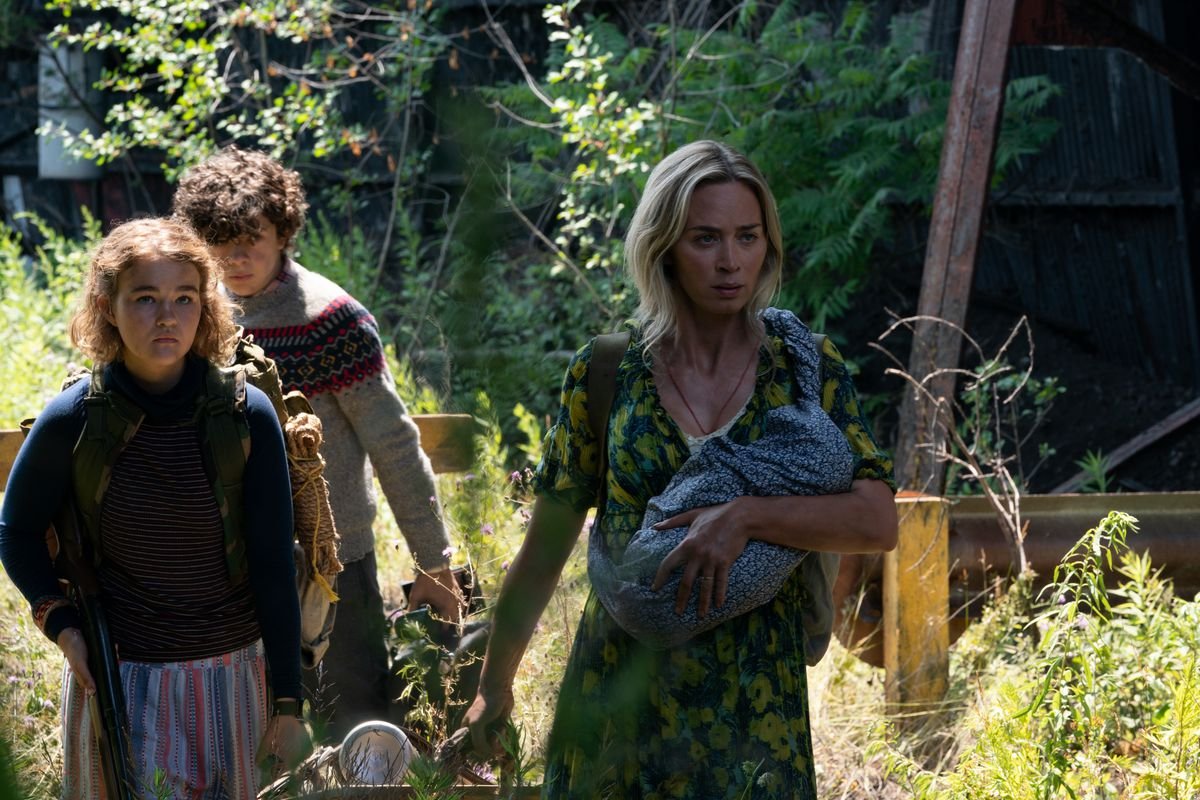
Photo: Paramount Pictures
A Quiet Place Part II often succumbs to a conservatism that holds it back. It’s worth highlighting that the Abbotts embody a white and traditional vision of family, and its paternalistic outlook almost completely ignores Evelyn, who has plenty to do, but no actual story. Krasinski wants to celebrate his deaf hero for her differences, but also burdens her with guilt over his character’s death, and makes her primary struggle the need to prove she can take care of people the way he could. None of this makes it a bad film — just a smaller one than it could be.
A Quiet Place Part II falters most in the ways it tries to go bigger than the original film, either thematically or in scope. The film is at its clumsiest as it reaches its climax. The Abbotts and their former neighbor Emmett (Cillian Murphy) split into three groups, and in a cross-cut finale, they each attempt to accomplish the impossible at the same time. It’s the sort of spectacle that’s effective enough the first time through, but might not play so well on repeat viewings. Yet ultimately, it’s forgivable, because A Quiet Place Part II isn’t really a horror movie so much as it’s an unusually stressful family film, with all of the requisite learning accompanied by horrific violence.
It’s hard to begrudge A Quiet Place Part II much, though. Clocking in at a brisk 97 minutes, it’s a lean-and-mean thriller with a lot of heart, even though it’s a bit thin. It’s the sort of sequel that feels like it was designed as a middle chapter, with its dangerous-road-trip structure that works to establish a new status quo for its characters. In the end, it plays its story a bit too safe: It does enough to set up another potentially engaging film, if Krasinski has another story to tell, but not enough to convince viewers that they’ll like it. For all that these movies take a unique interest in silence, they need to have a little more to say.
A Quiet Place Part II is now playing in theaters, and is expected to debut for streaming on Paramount Plus on July 12th.




































